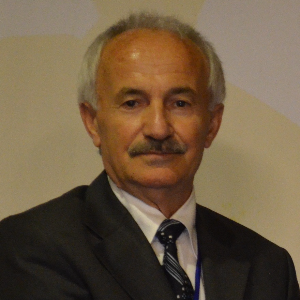Title : The role of thermomechanical reactions in memory behavior of shape memory alloys
Abstract:
Shape memory effect is a peculiar property exhibited by a series of alloy systems in the β-phase fields. These alloys have dual characteristics called thermoelasticity and superelasticity, governed by successive thermal and stress induced martensitic transformations, and performed thermally and mechanically. Thermal induced transformation occurs along with lattice twinning on cooling and ordered parent phase structures turn into twinned martensite structures. Twinned martensite structures turn into detwinned martensite structures by means of stress induced transformation with deformation. Strain energy is stored in the material with deformation and released upon heating, by recovering the original shape in bulk level, and cycles between original and deformed shapes on heating and cooling, respectively. Superelasticity is also a result of stress induced martensitic transformation and performed by mechanically stressing and releasing at a constant temperature in the parent austenite phase region. The ordered parent phase structures turn into the detwinned structures by means of stress induced martensitic transformation, by stressing. Shape memory effect is performed thermally in a temperature interval depending on the forward and reverse transformation, on cooling and heating, respectively, and this behavior is called thermoelasticity. Thermal induced martensitic transformation occurs as martensite variants with the cooperative movement of atoms in -type directions on {110}-type close packed planes of austenite matrix, by means of shear-like mechanism. The {110}- plane family represent 6 planes, and totally 24 martensite variants occur. Copper based alloys exhibit this property in metastable β-phase region, which has bcc-based structures. Lattice invariant shears are not uniform in copper-based shape memory alloys, and the ordered parent phase structures martensitically undergo the non-conventional complex layered structures on further cooling. The long-period layered structures can be described by different unit cells as 3R, 9R or 18R depending on the stacking sequences on the close-packed planes of the ordered lattice. In the present contribution, x-ray diffraction and transmission electron microscopy studies were carried out on two copper based CuZnAl and CuAlMn alloys. X-ray diffraction profiles and electron diffraction patterns exhibit super lattice reflections inherited from parent phase due to the diffusion less character of martensitic transformation. X-ray diffractograms taken in a long-time interval show that diffraction angles and intensities of diffraction peaks change with the aging time at room temperature, and this result refers to a new transformation in diffusive manner.


